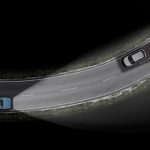A potential new design for padding in sports helmets could absorb as much as 25% more impact than existing foams, adding additional protection from head injuries.
The design, created by researchers at the University of Colorado Boulder, could help advance foams and padding that have been used for decades, improving safety and preventing head injuries.
“The need to protect fragile objects and human bodies is really widespread,” Lawrence Smith, an author of the study and CU Boulder doctoral graduate said. “It touches transportation, shipping and handling, sports, defense — all industries you’re trying to move things around safely.”
The researchers looked at how to improve the kind of foams found in items like bike helmets, football helmets or packing peanuts by focusing on structure and geometry. They discovered that their designs could absorb roughly six times more energy than standard foams made out of the same material and up to 25% more than other similar design structures.
“We’re doing this work to look at the relationship between material geometry and its ability to mitigate impact,” Robert MacCurdy, study author and CU Boulder professor in mechanical engineering, said. “Of course, it may someday be useful in helmets or pads or crash barriers or bumpers or packing materials, but we haven’t validated its use in any of these things. It’s just samples in the lab.”
Their goal was to find ways to improve impact mitigation, or minimize the impact from an outside force. For example, using foam within a football helmet to reduce the impact on a player’s head from a tackle during a game.
“Most folks have tried to make better materials … that have a greater ability to absorb or dissipate impacts,” MacCurdy said. “What we have done in our lab is not that. We have not tried to create some new material, instead what we’ve tried to do is discover a new arrangement of material.”
MacCurdy and Smith used a 3D printer to create testable samples of the foam.
“Bringing (samples) to life with a 3D printer and then smashing them with this test apparatus was really exciting,” Smith said. “A lot of the work we do in research is a little abstract and maybe even theoretical, so to have the chance to take real data on our actual designs in a real impact scenario was really fun.”
By using this design and geometry-driven approach, MacCurdy hopes they can make foams that have a broader bandwidth for mitigating impact. For example, when riding a bike, there’s no way to know in the event of a crash if it will be low-speed or high-speed. Regardless, the helmet needs to perform well. The team of researchers aims to create a geometry that performs well no matter the scenario.
MacCurdy said impact mitigation is widespread, and the need is universal.
“It’s just everywhere,” he said. “I used to play hockey until I had two concussions, for example, and hockey is not thought to be one of the more dangerous sports for concussions, but it affected me. People are talking about that in all kinds of contact sports. I continue to ride my bike and I wear a helmet when I do it, and I ski and I wear a helmet whenever I do that. So I’m hopeful that this approach is relevant in those kinds of applications.”
Related Articles
Bay Area Outdoors: Tarantulas, hiking, rock climbing and other free Mount Diablo events for 2024
Bicyclist loves Hillsdale road diet, suggests improved signage to make it even better: Roadshow
Saratoga High School seniors create Green Bike with peers in Taiwan
However, there is more work to do to demonstrate how the designs work in different scenarios. The samples the researchers tested were small, cubic samples with a 10 centemeters length on a side. MacCurdy said they think they can transform the sample to fit into a helmet but need to test it.
Smith said he hopes their research generates interest and gets more people researching so that eventually the technology is commercialized.
“Eventually, (I hope) this tech is commercialized and we can start making everything from helmets to knee pads to transportation packaging safer,” Smith said.


